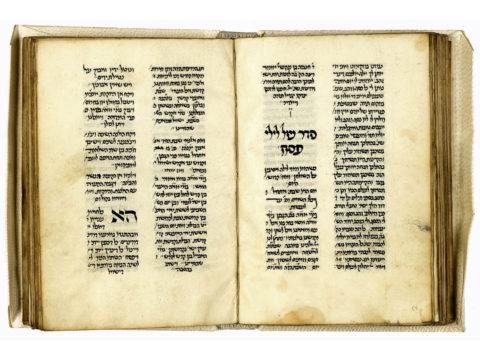
Jewish books almost always show evidence of active use. This is especially true of prayer books, which tended to be used intensively. The overall condition of this medieval prayer book, therefore, is note- worthy. The graceful Ashkenazic square and semi- cursive hands and the fine parchment used resulted in an elegant volume. It contains […]
VIEW →
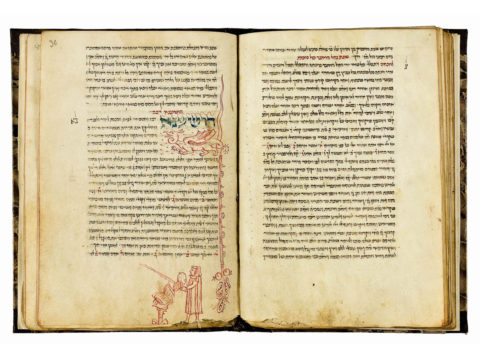
Authorship of this book of religious customs is not entirely clear. Its teachings rely on the insights of Jacob Moellin (1360–1427) of Mainz, one of the major halakhic codifiers in the Ashkenazic world. The at- tribution of the work to Samuel of Ulm is based on a former Jews’ College, London, manuscript (ms. 28,1; […]
VIEW →
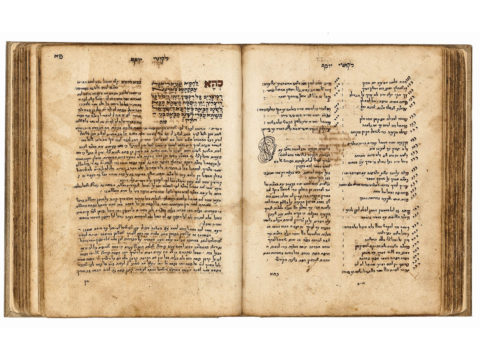
One of the oldest and most important Jewish communities in Europe was in Worms. It was the site of the rabbinic and scholarly activities of many great Jewish leaders, first and foremost among them Rashi. The scholarship and ancient traditions characteristic of the Jewish community in Worms are reflected in the minhagim (customs) that Juspa, […]
VIEW →

Johann Stefan Rittangel, a Christian Hebrew scholar, was the first to translate the Passover Haggadah into Latin and German. His translation also contains the melodies of the prayers sung to conclude a seder. The intense interest of Christian Hebrew scholars in the Hebrew language and grammar, and Jewish texts was intended to convince Jews […]
VIEW →
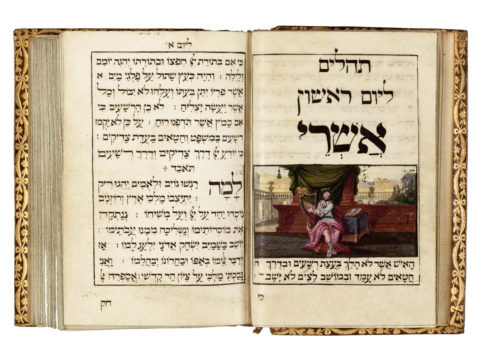
Although Moses Judah Leib ben Wolf Broda is the artist responsible for perhaps the most famous decorated Hebrew manuscript of the eighteenth century – the Von Geldern Haggadah of 1723, which may have been a source of inspiration for the Haggadah described in Heinrich Heine’s Der Rabbi von Bacherach – hardly anything is known […]
VIEW →
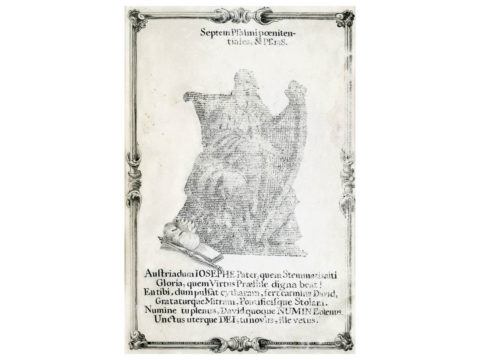
This calligram, a decorative form created from a written text, depicts King David playing a harp. It comprises the Latin texts of what is known as the Seven Penitential Psalms (6, 31, 37, 50, 101, 129, and 142) and of Psalm 138. The grouping of these psalms is in the Roman Catholic, not Jewish, […]
VIEW →
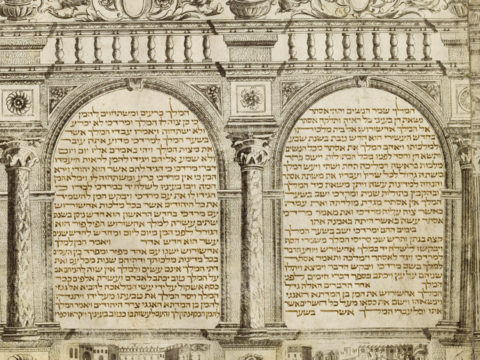
The engraved border of this scroll was designed by the Italian author, artist, and publisher Francesco Griselini (1717–1787). A man of broad intellectual pursuits, his interests ranged from botany and agri- culture to cartography, politics, drama, and the arts. In the late 1730s and 1740s he produced several works of Judaica, including four frontispieces for […]
VIEW →

Modena The Jewish community of Modena in north central Italy reached the height of its prosperity and cultural achievements during the seventeenth and eighteenth centuries while governed by the House of Este. Although the authorities forced the Jews into a ghetto in 1638, their privileges in commerce and industry remained protected. At its height, more […]
VIEW →







